The Brontës hold a fascination for people the world over thanks to the unique combination of their magnificent literature and their fascinating, at times tragic, lives. Charlotte Brontë was still alive when the first literary pilgrims began making their way to Haworth, and in the many decades since the interest has only grown – and so has the value of anything associated with the Brontës. In today’s post we’re going to look at some of the astonishing bargains that Brontë lovers were able to pick up in the last century.
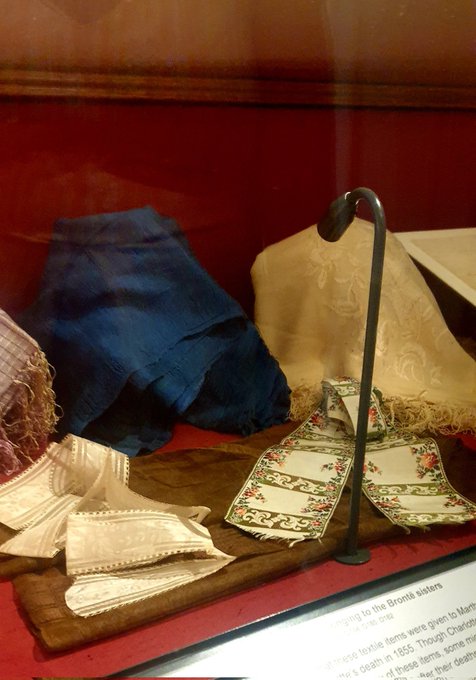
In my recent visit to the Brontë Parsonage Museum in Haworth I saw many items which were new to their display because they had once formed part of the private Honresfield Library Collection. There had been fears that its treasures would be lost to the nation forever, but thanks to public support and some very generous donors led by Sir Len Blavatnik the collection was bought and then gifted back to the nation. The cost of this collection? A cool £15 million, but just a century ago similar treasures could be picked up at a series of auctions for rather less; they could also be found in rather unusual circumstances, as this 1933 report from the Sunderland Daily Echo shows:
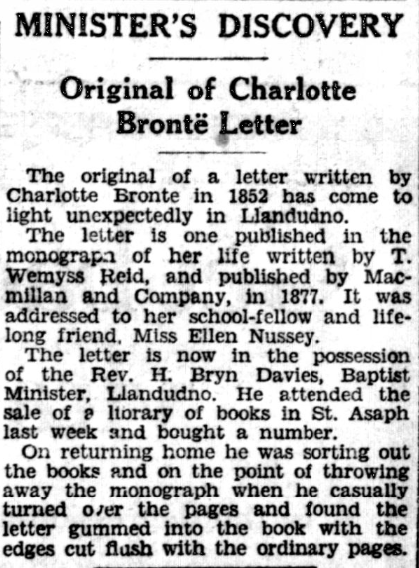
There are still undoubtedly Brontë treasures hidden away yet to be discovered, so if you ever buy an old book do give it a good examination. The bulk of Brontë items on display around the world today, however, have a known provenance. Many came from Haworth Parsonage itself and were among lots auctioned off after the deaths of Charlotte and then Patrick Brontë. Others have passed down from collections that once belonged to Charlotte’s widower Arthur Bell Nicholls, her best friend Ellen Nussey and from the long standing parsonage servant Martha Brown. Still others, rather more sadly, have their origins in the many letters and items that were tricked out of Ellen Nussey by unscrupulous conmen and then sold to wealthy Brontë collectors in America and beyond. One such letter was coming up for auction in 1937, as we see from the following Yorkshire Post report:
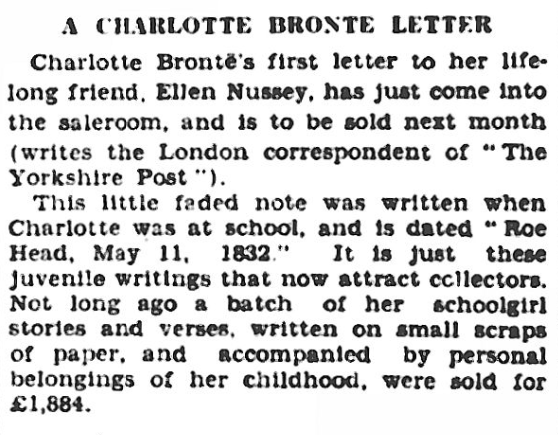
It’s interesting to see that five years earlier in 1932, there had been an auction of Charlotte Brontë’s childhood ephemera and “a batch of her schoolgirl stories and verses, written on small scraps of paper.” These sold for £1884. Today we would recognise them as one of her tiny books, and attach a value approaching six figures or more.
We now turn to the Bradford Daily Telegraph of December 16th 1916. Across the sea in France and Flanders, World War One is raging – and the newspaper carries pictures of local men killed or wounded in action. The Battle Of The Somme has recently ended, but smaller tragedies continue across the Western Front. Meanwhile, away from the trenches and tear gas, away from the death and dull despair, away from the senseless savagery and selfless sacrifices the wider world continues much as before – including an auction of Brontë items reported on below:
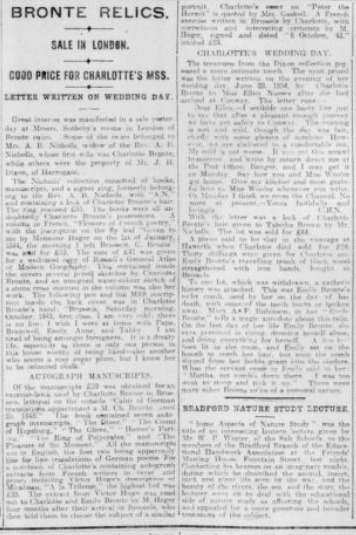
This large collection of items were from the estates of Mary Anna Bell Nicholls, who had recently died and who had been the second wife of Arthur Bell Nicholls, and from the estate of Brontë collector J. H. Dixon. Among the incredible bargains to be had that day were a ring containing Charlotte Brontë’s hair which she had gifted to her husband – yours for £35. For £39 you could have one of Charlotte’s Brussels notebooks in which she had written a series of short stories. A letter sent by Charlotte to Ellen Nussey on the first day of her honeymoon fetched £44, and with it came a lock of Charlotte Brontë’s hair.
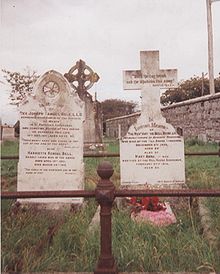
Perhaps the most moving of all the lots that came up for auction that day was the comb used by Emily Brontë on the day of her death – the middle is burnt out after it fell from Emily’s hands onto the fire. Remarkably, there were no bids at all for that item and it was withdrawn unsold.
These small items, added together, tell of a remarkable life, and it’s one that still fascinates us today. As the exponential increase in the value of Brontë letters and items shows, that fascination shows no sign of stopping. Thankfully you don’t need to be a millionaire to see many of them, simply head to the Brontë Parsonage Museum in Haworth. I hope to see you next week for another new Brontë blog post.
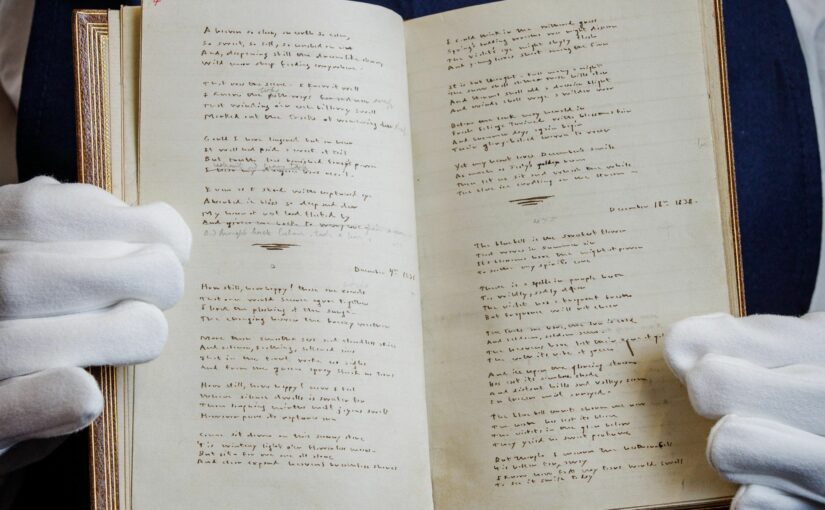
Fascinating. I hope to visit the parsonage one of these days soon. I have yet to visit England.
I wish private owners (often unknown) would at least loan their precious Bronte items to the Bronte Parsonage Museum.
Regarding Emily’s comb which she used on the day of her death- will it be possible to share more information about that? I have never come across that in other sources. Does a photograph exist, by any chance? Please let us know. Thank you so much for your wonderful articles, as always! 🙂